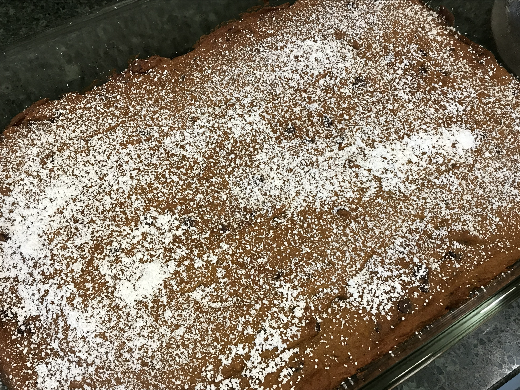"I don’t say this out of need, for I have learned to be content in whatever circumstances I find myself. I know how to make do with little, and I know how to make do with a lot. In any and all circumstances I have learned the secret of being content—whether well fed or hungry, whether in abundance or in need." Philippians 4:11-12
Our fridge, freezers, and pantry are stuffed to the gills right now. I had to really slam the lid down on the deep-freeze to get it to shut all the way this evening after adding more Brussel sprout greens. We have been blessed with abundance, and I'm grateful to my Provider for this blessing.
Contentment in abundance is a Biblical principle laid out by the apostle Paul in his letters to the churches. It involves recognizing the abundance in our lives, gratitude to the One who provides all, generosity with others, and satisfaction with all that is provided.
Oct. 4 Shopping at Grocery Outlet and Walmart this day (local stores, 5-10 minute drive). At Grocery Outlet, I bought 2 boxes of graham crackers (off-brand 98 cents ea), 3 boxes saltines (off-brand 98 cents each), 5 dozen brown medium eggs (best price on eggs this week in my area $2.99/doz), fresh blueberries (just meh -- $4.99) and gouda cheese (very good $4.49) for a special lunch with one daughter. At Walmart (right across the street), I bought 2 3-lb boxes macaroni ($2.72 ea), 2 packs turkey snack sticks ($3.72 ea), 5 lbs carrots (($3.98), and a bunch of bananas (50 cents/lb). Combined both stores I spent $47.53.
Oct. 5 (Yes, the very next day) stopped at Grocery Outlet while running an errand with my husband. I bought 3 16-oz jars of Planters peanuts ($1.99 ea). Spent $5.97.
Oct. 11 The day we took a picnic lunch to the river area near us. While we brought our own food for lunch, we bought 4 slices of pie (2 pecan, 1 chocolate pecan, 1 raspberry) to take home. Spent $22.00.
Oct. 14 A big shopping at WinCo. I bought Gala apples (98 cents/lb), 10 lbs carrots ($6.98), 1 acorn squash (68 cents/lb), bananas (50 cents lb), head of green cabbage (87 cents/lb), 1 green pepper (78 cents), bulk sliced almonds ($4.58/lb), bulk natural peanut butter ($2.18/lb), about a pound of pepperoni ($6.10), 1 pumpkin (33 cents/lb), gallon milk ($3.39), 5 lbs organic flour for bread ($6.96), 2 lbs butter ($3.98 ea), 2 28-oz jars applesauce ($2.48), frozen fish sticks ($4.98), turkey breakfast sausage ($5.90), gallon oil ($5.97), 4 bags frozen peas ($1.18 ea), family pack b/s chicken breasts ($10.05). I spent $87.41.
Oct. 24 Outing to burger place near pumpkin farm. Spent $27.85 for 4 people.
Oct. 25 Walmart for a few things (mostly needed OTCs). In food I bought 1 gallon milk ($3.68), 2 packs turkey snack sticks ($3.72 ea). I spent $12.10.
Oct. 26 My husband and I had a date night out. We chose Taco Time. He had the beef nachos and I had the beef taco salad. We spent $16.07. It was a nice meal out. Taco Time is not bad for fast food. Everything there tastes fresher than other fast food taco places. For dining in, they serve the meals to the table and on real plates. At this location, the dining area is around a corner from the walk-up counter, so it feels more private. It was quiet the entire time we were there -- no other diners in the dining area. The drive-thru does a brisk business, however.
Oct. 28 Second big shopping day for the month at WinCo. I bought 1 bag of turkey breakfast sausage ($6.56) and 1 bag of pork breakfast sausage ($6.67), various meats for my husband's lunches ($8.56 total), 8 lbs butter ($3.48 lb), mayonnaise ($3.28), 5 lbs organic flour ( $6.96), 2 boxes marked down breakfast cereal (25 cents ea), Honey Crisp and Gala apples (98 cents lb), bulk peanuts ($2.38/lb), bulk natural peanut butter ($2.18 lb), bulk chili powder ($4.38 lb), bulk black pepper ($6.28 lb), bulk ginger ($6.08 lb), bulk sliced almonds ($3.98 lb), bulk cinnamon sticks ($13.88 lb), 1 acorn squash (48 cents lb), and some assorted bulk candy ($3.50). I spent $80.42.
Total spent on food for the month, including dining out and bakery purchase $299.35, which works out to about $67 per week for 4 adults.
We bought food at restaurants on three occasions this month, which is very unusual for us. However, we had decided to do a few local things in lieu of taking a vacation this year. So, while we spent $65.92 on restaurant/bakery foods, we saved a lot by not taking a vacation.
So what was in my cart?
for the pantry
2 boxes graham crackers
3 boxes saltine crackers
6 lbs macaroni pasta
4 lbs peanuts
sliced almonds (I use these in pesto and almond coconut bar cookies)
10 lbs organic flour (this is the only white flour that's available in my stores that does not contain barley, barley malt, malt extract, malted barley, or enzymes (barley-based))
gallon oil
jar of mayonnaise
2 boxes cereal
chili powder
ground ginger
black pepper
cinnamon sticks
bulk candy
2 containers natural peanut butter (not really pantry, needs refrigeration to extend time)
dairy and eggs
5 dozen eggs
Gouda cheese
2 gallons milk
10 lbs butter
produce
15 lbs carrots
2 bunches bananas
many lbs of apples
2 acorn squash
cabbage
green pepper
box of fresh blueberries
1 pumpkin
4 bags frozen peas
2 jars applesauce
meat
1 lb pepperoni (enough for 5-6 large pizzas)
frozen fish sticks
breakfast sausage (3 bags)
meats to cook for my husband's lunches
4 packs turkey snack sticks
family pack chicken breasts, b/s
other
3 meals or dessert out











































